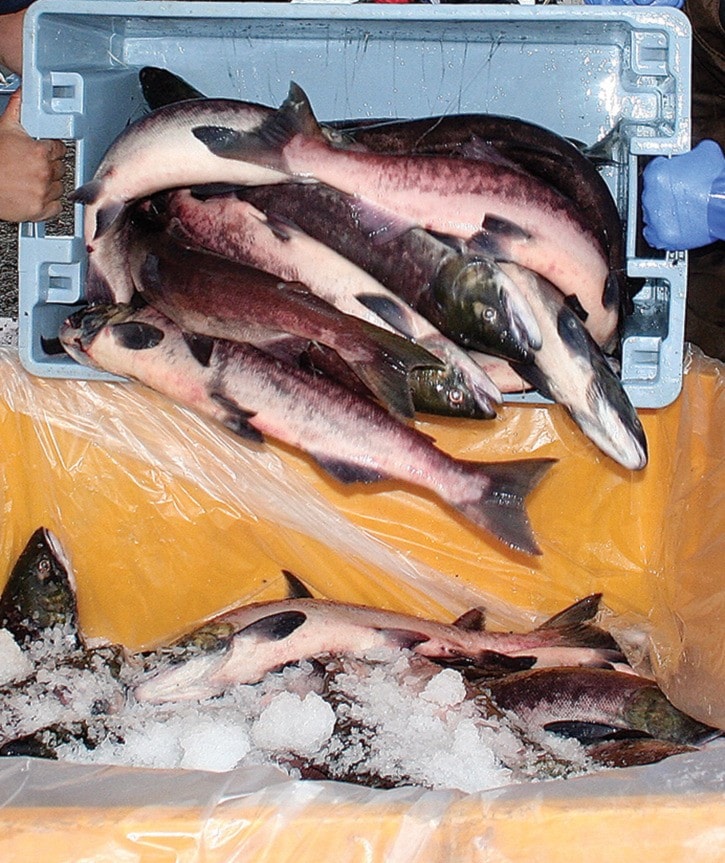According to the Skeena Fisheries Commission (SFC), this year’s Skeena sockeye return has been significantly weaker than expected.
The total return of Skeena sockeye for the year is estimated at approximately 855,000, drastically lower than the pre-season estimate of over three million.
“We are informing all food, social and ceremonial fishermen who target Skeena sockeye that if the run continues to be downgraded in-season it may be necessary to consider restrictions to limit Skeena sockeye catch for conservation reasons,” said the SFC.
According to the SFC, all species other than coho and pink salmon are returning at less than historic decadal averages.
“At this time it is unlikely that the return will be so poor that closures of the fishery will be necessary for this year,” said SFC. “However, if the run continues to be downgraded, conservation measures may need to be taken.”
Currently, no commercial fishing is allowed to take place until the Skeena sockeye forecasted return reaches at least 1.05 million.
At this time, recreational fishers can only take one Skeena sockeye per day.
At Babine Lake, the daily limit is also of one sockeye salmon for recreational fishers. The possession limit, however, is two daily limits.
The British Columbia sport fishing regulations state that you may possess only twice the daily limit of all species. This possession limit applies per person whether you or someone else caught the fish.
There are currently no restrictions on First Nations fishing in the Skeena River. However, if the overall run projections drop below 550,000, this will trigger consultation with First Nations to limit their fisheries. Under Canadian law, Skeena First Nations will maintain priority access over all other Skeena sockeye fishery.
Lake Babine Nation Chief Wilf Adam said it might be too soon to determine what the salmon situation is at Babine Lake.
“We are doing food fish for now and I’m not sure about commercial sales yet as the numbers [of salmon] are still low,” he said. “I’m hoping the salmon is just late.”
Management guidelines of Fisheries and Oceans Canada for Skeena River sockeye strive to meet an escapement target of 900,000 annually, followed by a First Nation’s priority access fishery harvest of 150,000 sockeye.
Fisheries and Oceans Canada allows limited recreational fishing for Skeena sockeye below the 1.05 million threshold. When the escapement is above one million, two sockeye per day may be retained. When the escapement is between 800,000 and one million, one sockeye per day may be retained.
The SFC said they will continue to monitor the situation and report any important development on the issue, as necessary, or in the event that consultation needs to take place to restrict food, social and ceremonial fishing.
The SFC is one of the key Skeena watershed Aboriginal organizations that focuses on fisheries management, science and conservation. The commission, as directed by signatory First Nations, responds to management and access priorities relating to the broad aboriginal interest in the fisheries resource.
If you would like more information on this issue you may contact Mark Cleveland at 250-641-3346 or via email at gfa99@telus.net.
